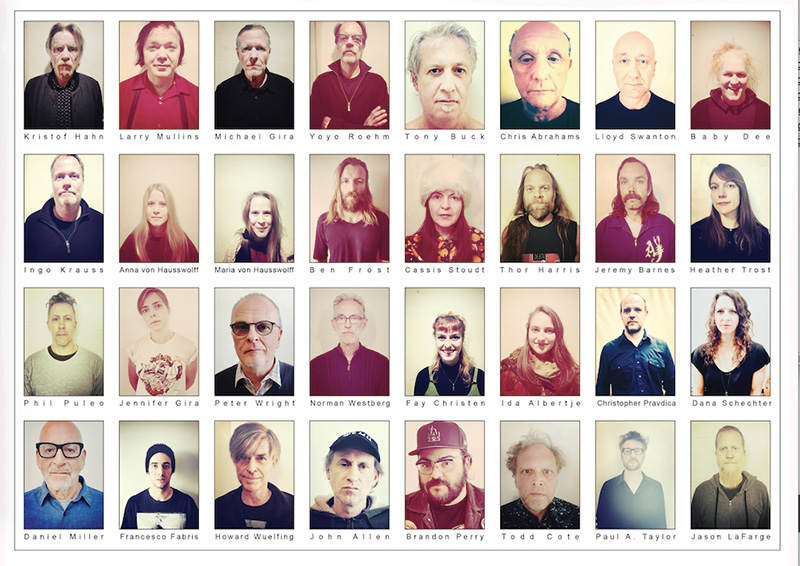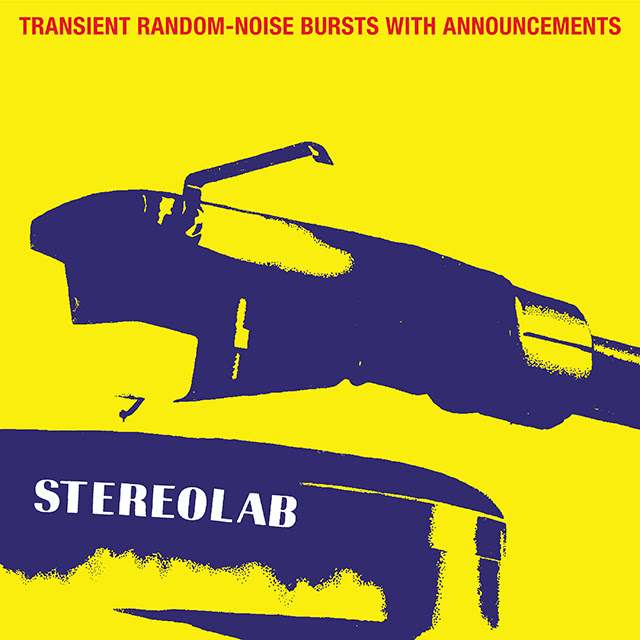クラブ・ミュージック以降の感覚を取り入れたポップ~ロックを奏でるバンドとして、00年代半ばという「あの時代」に、ホット・チップもまた登場してきた。〈Moshi Moshi〉からのファーストこそ気だるさ漂うロウファイ・ポップだったけれど、彼らのイメージを決定づけたのはやはり、〈DFA〉およびメジャーとの契約を経て放たれたセカンドのほうだろう。当時の80年代リヴァイヴァルやいわゆるニュー・レイヴとも共振した同作以後、ダンサブルなシンセポップ・バンドとして着実に歩を進めてきた彼らは、チャールズ・ヘイワードとのコラボや〈Domino〉への移籍などを経験しながら、いまやUKの大御所バンドの一角を占めるまでに成長を遂げている。
この夏4年ぶりとなるアルバムをリリースした彼らは、めずらしく外部からハウ・トゥ・ドレス・ウェルやジ・エックスエックス、サンファなどのプロデュースで知られるロデイド・マクドナルド(DRCミュージックにも参加)と、最近ではカインドネスのミックスを手がけていた故フィリップ・ズダールのふたりをプロデューサーとして招いている。はたして冒険は功を奏し、『A Bath Full Of Ecstacy』はこれまでとは異なる音響を聴かせつつも、従来以上にキャッチーなダンス・ポップを追及している。その新作について、初の単独来日公演のため赤坂BLITZを訪れていたフロントマン、アレクシス・テイラーに話を伺った。
世界というものはときにすごく重荷に感じてしまうことがある。でもそのなかで音楽や愛を分けあえば、互いにつながりあえるし少し心が安らぐ……でもだからと言ってオール・オッケーって意味でもないんだよ。
■“Melody Of Love”という曲は、トランプやブレグジットにたいする幻滅がインスピレイションになっているそうですね。いまイギリスの情況はどうなっているんでしょう?
アレクシス・テイラー(Alexis Taylor、以下AT):ブレグジットにかんする政治的な決断がいろいろ遅れていて、たくさんの混乱が起きてる感じだと思うんだよね。僕含め、人びとはこれから何が起きるのかまったくわからない状況なんだ。僕自身や、僕の周りの人間はブレグジットの投票結果に怒りを感じているよ。怒りを感じていると同時に、投票で決まったということの事実も受け止めなければならない。国にとっては悲惨な結果だし、ここからさらにひどくなっていくと思うよ。ボリス・ジョンソンも僕から見たらぜんぜんやり遂げられてないし。僕は政治のエキスパートではないけど、いまの状況には混乱してるし怒りも感じているしすごく憂鬱な気持ちなんだ。こういう気持ちでいるのは僕だけではないと思う。政治的な部分だけではなく、環境問題にたいする先見性の欠如に対して、僕含め大勢の人たちは不安を抱えている。なんの変わりもなく、気にも止めずに生きられる人もいるけど、ほんとんどの人は未来に不安を抱えているんだ。もうすでに景気後退によって人生が良くない方向に変わってしまっている人もたくさんいる。その原因はアメリカだとトランプが国民を守っていないからで、UKでも似た状況だと思うんだ。さっきも言ったように僕は政治のエキスパートじゃないし、曖昧なことは言いたくないんだけど、保守主義で右寄りの人が力を持っていて、自分勝手な決断ばかり下しているのを見るのは腹立たしいね。でも僕らのこの曲は、政治のことを具体的に伝えようとしているわけではないんだよね。憂鬱な気持ちや、信義のない気持ちを歌っているんだ。世界というものはときにすごく重荷に感じてしまうことがある。でもそのなかで音楽や愛を分けあえば、互いにつながりあえるし少し心が安らぐ……でもだからと言ってオール・オッケーって意味でもないんだよ。苦しい気持ちと互いをつなぎあわせてくれるポジティヴなもののあいだにあるテンション感をあらわしている曲なんだ。
■離脱を嘆いているのは金持ちだという話もありますし、一概にどちらがいいとも言えない情況のようにも見えます。“Positive”はホームレスや苦境に陥っている人たちについての歌だそうですが……
AT:“Positive”はおもにホームレスについて歌っている曲というわけではないんだ。薬物依存によって壊れていく人間関係とか、依存症を患っている人の知覚的なものをテーマにしてる曲でね。薬物依存はその人自身の問題であるという世間一般の考え方と、依存者に背を向ける社会。すごく複雑な問題だね。“Positive”は、空想のカップルにのしかかってくる、精神病や薬物中毒が原因のネガティヴな圧力について歌っているんだ。「ポジティヴ」って言葉はダブルミーニングとして使ってるんだよね。ひとつは、確信的な意味。たとえば人に「確実にそうなのか?」「絶対に?」って聞くときみたいな感じで、もうひとつは「陽性」って意味。「精神病の診断の結果は陽性だったの?」みたいな感じだね。僕が書いたリリックにはそういう意味が込められてるんだ。ふたりの人間のあいだにある愛や、どっちかが薬物依存症だった場合の苦悩やストレス、その状態が続くとすべてを失い最終的にはホームレスになってしまう、っていうようなことを歌ってるんだよね。サビのリリックはジョー(・ゴッダード)が書いてるんだけど、彼のリリックは僕のリリックとは逆で、曲のポジティヴでアップビートな要素を歌っているんだ。このふたつのムードの葛藤を表現している曲なんだよね。UKでもホームレスの状況というのは、拡大し続けている大きな問題で、自分自身はこの問題を良くするためにどうすればいいのかわからないけど、チャリティに寄付をしたりするのがいちばん効果があるのかなとは思っている。僕はそういうホームレスの方たちに直接お金を渡したり、話をしたりしているんだ。自分のなかで解決策は見つかってないんだけど、でもこの問題についてはよく考えてるよ。UKでも拡大し続けてるし、アメリカでも拡大し続けてる問題だからね。この曲は自分が体験していなくても、苦しい状況に置かれている人にたいする思いやりやコンパッションを持つことのたいせつさを表現してるんじゃないかな。
■今年はデイヴの『Psychodrama』がマーキュリー・プライズをとりましたけど、聴いています?
AT:賞をとったのは知ってるけど、聴いたことはないんだよね。聴いた? いいアルバム?
■鬱からの恢復がテーマなんですが、鬱は日本では社会ではなく個人の問題とみなされることが多いので、いまの薬物依存の話とつながるかなと思いまして。
AT:僕はただ自分や自分のまわりの人の経験からインスパイアされてつくっただけなんだ。僕は赤の他人の経験をもとに曲を書くことができない。だから友だちや自分の近くにいる人たちが経験したり、見てるものを曲にしているんだよね。
難しい問題に気づくと同時に喜びにも気づく──人びととの強いつながりを信じるっていうテーマが大きく含まれてるんだ。
■今回のアルバムは“No God”と題された曲で終わりますね。このアルバムに救いはあると思いますか?
AT:もちろん。“No God”はじつはすごくポジティヴな曲なんだ。誰かをたいせつに思っているという曲でね。歌詞ではたくさんのものをリストアップしているんだけど、そのリストがどんなに長くても、その人にたいする気持ちには届かない、っていう内容の曲なんだ。僕の君にたいする愛はこれらには比べものにならないほど大きいんだよ、って歌ってるすごくポジティヴな曲で、だから「神さまはいない」とか歌ってる暗い曲じゃないんだよ。タイトルがミスリーディングだから、「神さまがいない」って歌ってる曲なんじゃないかって思われがちなんだけど、そうじゃないんだよね。神さまが存在しているって思える気持ち以上の気持ちを君にたいして感じる、っていう純粋なラヴ・ソングなんだ。センティメンタルでちょっとクサい曲だなとも思うんだけど、いちばん最初のリリックをタイトルにしているんだけど、それがよりテーマを強調してるんじゃないかなと思う。
ジョーがタイトルをつけた“Bath Full Of Ecstasy”もそうなんだよね。「私たちのエクスタシーの中で楽しんでいきなよ」っていう意味の言葉で、ラヴ・ソングなんだけど、「A Bath Full Of Ecstacy」だったら意味が変わってしまう、ミスリーディングなタイトルなんだ。“No God”もタイトルをジョーに伝えたら気に入ってくれた。ちょっと違うスピンを与えてくれるんだよね。タイトルだけみると、じっさいはそういう意味ではないのに、“Bath Full Of Ecstacy”はドラッグの曲のように思われるし、“No God”も反宗教主義っぽい曲だと勘ちがいされる。このアルバムは深刻な問題も歌ってるけど、基本的には希望を歌ってるポジティヴなアルバムだと思うね。“Bath Full Of Ecstasy”、“Spell”、“Echo”、“Melody Of Love”、“Clear Blue Skies”はぜんぶポジティヴな曲だと思うんだ。ネガティヴな内容の“Positive”でも、サビには、精神を昂めなきゃっていうポジティヴなメッセージが含まれている。難しい問題に気づくと同時に喜びにも気づく──人びととの強いつながりを信じるっていうテーマが大きく含まれてるんだ。
■全体的にかつてなくダンサブルな曲が多いように感じたのですが、それはプロデューサーのロデイド・マクドナルド、または先日亡くなったフィリップ・ズダールの功績ですか?
AT:このアルバムのデモをつくったのはふたりに出会う前だったから、ダンサブルな要素はもともとあったんだよね。でもマクドナルドが“Melody Of Love”を聴いたときに、「これは10分あるクラブ・トラックじゃなくてポップ・ソング」だって言って、かなり編集してくれたよ。“Bath Full Of Ecstacy”も現代風にプロデュースしてくれたし、“Hungry Child”はふたりとも力を合わせてくれて、ダンスフロアで映える曲に仕上げる協力をしてくれた。あと、いままで出してきたアルバムにはかならずバラードが入っていたんだけど、今回は初めてバラードが1曲もないアルバムだから、それもダンサブルに聞こえた理由のひとつかもしれないね。“Why Does My Mind”はダンス・トラックじゃないけど、テンポが落ちないから、最初から最後まで同じダンサブルなグルーヴが続くような作品になってる。僕的には“Clear Blue Skies”なんかはやさしめの曲だと思う。クラブっぽいとは思わないね。逆に“Bath Full Of Ecstacy”はバラードっぽいけど、クラブで流れても成立する曲だと思う。ダイナミクスが変わらないようフィルターにかけて制作したけど、とくによりクラブっぽいアルバムに仕上げようと思ってつくったわけではないよ。
■これまでホット・チップはかなり多くのリミックス・ワークをこなしていますが、もっとも印象に残っているのは?
AT:ジョーは最近リゾ(Lizzo)の“Juice”をリミックスしていたね。僕は参加してないんだけど、エキサイティングですごくいいリミックスだなって思った。リミックス本来の、あるべき姿に仕上がってるなって感じだよ。もとの曲をしっかり呼吸させつつ、ダンスフロアでも生かすと言ったらいいかな。僕自身はロバート・ワイアットと、クラフトワークのリミックスをやったときのことがすごく印象に残ってるね。僕らが若いころから聴いてきた音楽をやってきた面々だったから、すごく特別なものだった。あと、僕の大好きな日本のバンド、マヘル・シャラル・ハシュ・バズに自分たちの“Look At Where We Are”って曲をリミックスしてもらったときのことも印象に残ってるね。リミックスというよりカヴァーみたいな感じだったけど、すごくよかったんだ。僕らの歌詞を日本語で歌ってくれていて新鮮だったよ。リミックスっていうのはいい意味で誰かに、曲に変化を加えてもらえる機会なんじゃないかな。
■今後リミックスしたくないアーティストはいますか?
AT:たしかに、好きじゃないなと思う音楽はたくさんあるよ。まずヴォーカルの声じたいが好きじゃなければリミックスはしたくないんだ。僕はどっちかというと、嫌いな音楽には集中したくないから、まず聴かないかな。自分の好きな音楽だけを集中して聴いていたいからね。
















